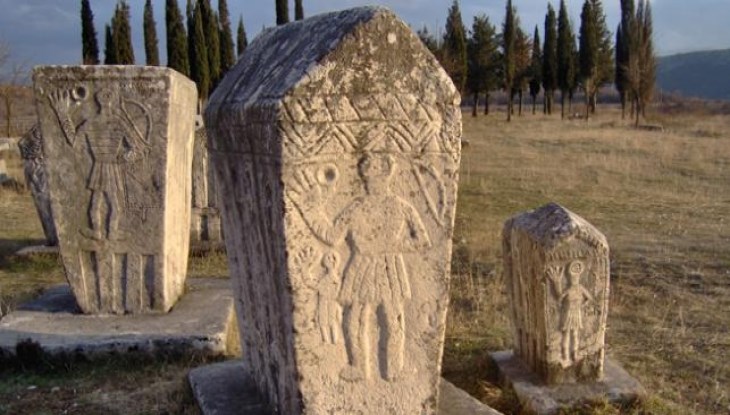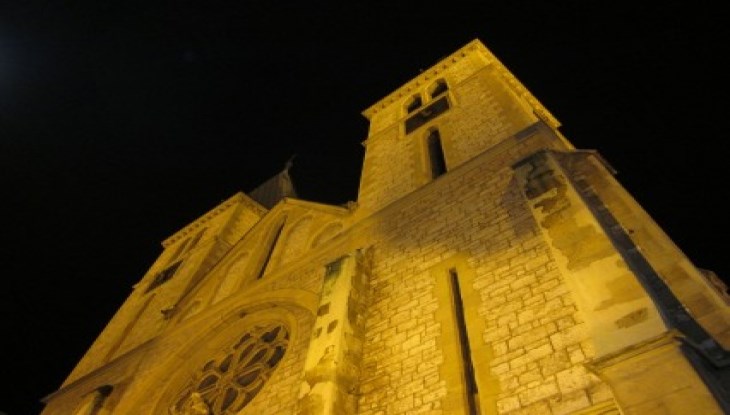Croats in Bosnia and Herzegovina
Legal Status
According to the Constitution of Bosnia and Herzegovina (Annex IV of the Dayton Peace Agreement), Croats are one of the three constituent peoples in Bosnia and Herzegovina (BiH). The Croatian language is one of the three official languages.
Population
The census in Bosnia and Herzegovina was held from 1 October to 15 October 2013. The previous census was held in1991. According to the census results Bosnia and Herzegovina has the population of 3,531,159 people. According to their nationality Croats make up 15.43%, Bosniaks 50.11%, Serbs 30.78% while 0.77% people did not declare their nationality.
In Federation of Bosnia and Herzegovina Croats make up 22.4%, Bosniaks 70.4% and Serbs 3.6% of the total population. In Republika Srpska Serbs make up 81.51%, Bosniaks 13.99% and Croats 2.41%.
In Brčko District Croats make up 20.66%, Bosniaks 42.36% and Serbs 34.58%.
According to the Federal Office for Statistics of Federation of Bosnia and Herzegovina and census taken in 1961, Croats made up 21.7% of the total population of Bosnia and Herzegovina. In 1991, 760, 852 inhabitants of Bosnia and Herzegovina declared themselves Croats, which represents 17.4 % of the total population.
Education
In the regions of Bosnia and Herzegovina where Croats make up the majority of local population, classes in elementary and high schools are organized based on the curriculum in the Croatian language. The program is based on the constitutional provisions and in accordance with the laws of Bosnia and Herzegovina which also guarantee the equality of all three constituent peoples, as well as the rights of national minorities. The educational program is laid out in the federal Constitution, and by the legislation of each individual county.
The entire curriculum in the Croatian language, in all its forms, has the objective to promote Croatian language, tradition, culture and the religious heritage of the Croatian people in Bosnia and Herzegovina, and therefore, it cannot be just reduced to subject matter of any particular subject. The subjects related to natural sciences, such as mathematics or physics, also incorporate national and cultural elements. There are scientific, historical and cultural facts as well as renowned individuals who belong to the scientific and cultural heritage of the entire Croatian people and, therefore, they are studied within each individual school subject (R. Bošković, F. Vrančić, A. Mohorovičić, M. Getaldić, S. Penkala, V. Prelog) and each of them has their place in the curriculum and school textbooks in the Croatian language. The above mentioned facts and individuals are part of the national heritage which is of great importance to the Croatian people and their culture.
Higher education
The University of Mostar is located in the city of Mostar. It is the only Croatian university outside the Republic of Croatia and the only university out of nine other universities in Bosnia and Herzegovina, where classes are held in Croatian. The University of Mostar has a long history. Its predecessor was the School of Franciscan Theology, a first high school in Mostar and Herzegovina going back to 1895, when the School was first founded. By the mid-twentieth century the Teacher Training College was established, followed by the opening of the Higher Technical School of Mechanical Engineering. These were the first foundations of the future Mostar University. In 1977, Mostar became an independent academic center comprising several universities and colleges and separating itself from the University of Sarajevo, adopting instead its own title, i.e. “The University Đemal Bijedić". Despite significant destructions of the university facilities and the overall threat students and teachers had to endure during the entire war period (1992 -1995), the Mostar University continued its activities. By the mid-nineties of the 20th century, new faculty facilities and research centers were established.
The University continues to grow, and as of now it has ten faculties, including the Academy of Fine Arts, with a total number of more than 16,000 students, including numerous professors and associates. A substantial assistance to the University of Mostar is provided by the universities from the Republic of Croatia and also by the government of the Republic of Croatia. Croatia’s universities provide assistance by granting local professors the right to work at the University of Mostar, whereas the government of the Republic of Croatia also contributes to the overall costs of this arrangement. In addition, the Government of the Republic of Croatia also allocates substantial funds for the development of the University of Mostar. This enables the University of Mostar to achieve the European standards and successfully integrate itself into the so-called Bologna process.
The Faculty of Catholic Theology is a member institution of the University of Sarajevo. By a decree of the Congregation for Catholic Education no. 714/2004 of 21 September, 2009 the Study of theology was upgraded according to canonical regulations to an institution of higher learning under the name - Faculty of Catholic Theology in Sarajevo.
Other Educational Institutions
There is a large number of music schools (primary and secondary) in Bosnia and Herzegovina and public schools for special education (for individuals with learning disabilities). Classes are also taught according to the Croatian language curriculum.
Within the University of Mostar there are following scientific institutes: the Institute of Economics, the Institute of Civil Engineering, the Institute of the Croatian Language, Literature and History, the Institute for Studies of the Latin Language, the Institute of Mechanical Engineering, the Institute for Legal Studies, the Institute for Social Research, the Institute for Research and Development in the karst areas.
The Croatian Lexicographical Institute in Bosnia and Herzegovina published the “ Encyclopedia of Bosnia and Herzegovina”, reflecting thus the Croatian view of Bosnia and Herzegovina and also representing the first general and national (Croatian) encyclopedia ever published in Bosnia and Herzegovina.
The Institute of Education in Mostar is also in charge of pre-school, primary and secondary education of the Croatian people in Bosnia and Herzegovina. In this regard the Institute provides substantial support for educational ministries within each county. The Institute performs activities that are aimed at the development and promotion of general education, while bearing in mind the unique status of Croats in Bosnia and Herzegovina.
Associations and Publishers
There are numerous Croatian organizations in Bosnia and Herzegovina that actively contribute to preservation and strengthening of the Croatian national consciousness and to the promotion of the Croatian language and culture. Their objectives are to preserve and develop Croatian cultural values, assist students in the educational process and their scientific and artistic development, improve their economic conditions and encourage displaced Croats for the return . Also, their activities include collecting and distributing humanitarian aid to socially vulnerable and dispossessed Croats.
Regarding publishing activities in the Croatian language one can single out: ” Hrvatski glasnik”, a journal of the Croatian cultural association “Napredak” , published by the parish of Soli, in the town of Tuzla, "Katolički tjednik” , published by the Archdiocese of Vrhbosna - Sarajevo, “Osvit”, a magazine for literature, culture and social issues, published by the Croatian Writers’ Association of Herceg- Bosna in Mostar, the bulletin "Rama," published by the Rama association, and “Hrvatska misao”, a magazine of art and science, published by the branch office of Matica Hrvatska in Sarajevo, a magazine “Bobovac“ published by Croats from Vareš.




